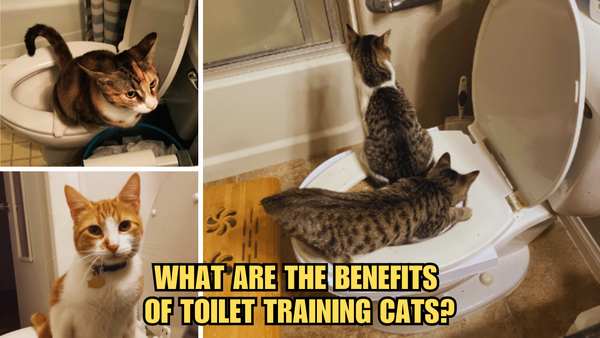Key Takeaways:
- Effectiveness of Pet Gates: Understanding whether a pet gate can effectively contain a cat depends on the cat's size, agility, and determination.
- Types of Gates: Exploring different types of gates such as extra tall cat gates and their specific features that may deter cats from climbing or jumping over.
- Alternative Solutions: Considering other methods to restrict a cat's movement around the house, ensuring safety and comfort for both the pet and the owner.
Introduction to Pet Gates and Cats
Pet gates are commonly used in homes to restrict the movements of pets, particularly small dogs and young children. But when it comes to cats, known for their agility and curiosity, the question arises: will a pet gate stop a cat? This article delves into the effectiveness of pet gates for cats, exploring various factors that influence their success.
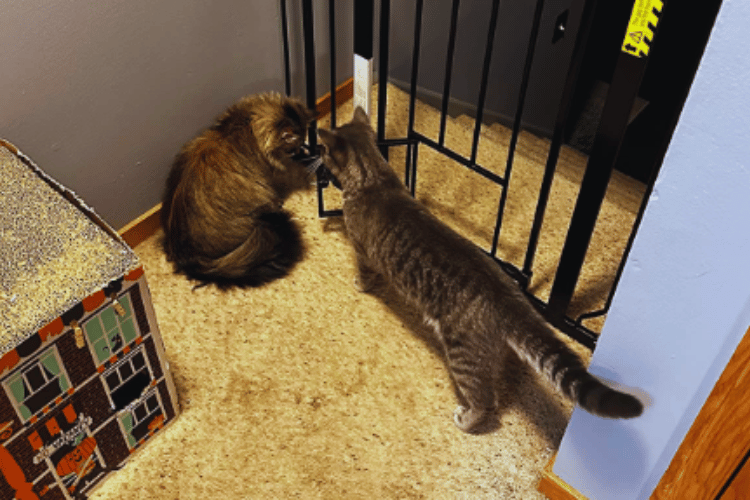
Understanding Cat Behavior
Cats are natural climbers and jumpers. Most cats can easily scale over obstacles that are much higher than the average baby gate. This inherent ability makes it challenging to confine them to certain areas of the house using standard gates. Understanding your cat’s behavior is crucial in determining whether a pet gate can serve as an effective barrier.
Types of Pet Gates
There are several types of pet gates available on the market, each with different features and designs. The standard baby gate is often not enough for a cat. However, an extra tall cat gate might provide a better solution. These gates are designed to be taller, making it more difficult for cats to jump over.
Features of Extra Tall Cat Gates
Extra tall cat gates are specifically designed to be a formidable barrier for cats. With heights often exceeding 40 inches, these gates challenge even the most agile felines. They often come with additional features like vertical bars that reduce the footholds for climbing, making them an excellent choice for cat owners.
Installation and Placement
Proper installation is key to maximizing the effectiveness of a pet gate. Ensuring that the gate is securely attached to the wall and that there are no gaps large enough for a cat to squeeze through is essential. Placement also plays a crucial role; installing gates at strategic points like the doorway to the kitchen or the stairs can help manage your cat’s access.
Cat Gate Materials and Durability
The material of the pet gate also affects its efficacy. Durable materials like metal or heavy-duty plastic are recommended as they withstand biting and clawing, common behaviors if a cat wants to get to the other side. Wooden gates might look aesthetic but can suffer from damage more quickly due to scratching and biting.
Cat Training and Pet Gates
Training your cat to respect boundaries can enhance the effectiveness of a pet gate. Using positive reinforcement to teach your cat to stay away from certain areas can be beneficial. However, training a cat requires patience and consistency, and the results may vary depending on the individual cat’s temperament.
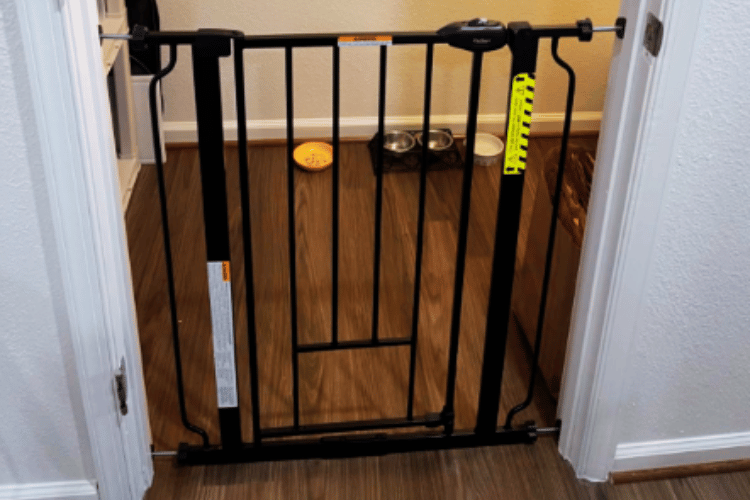
Impact of Gate Height and Placement
When considering the effectiveness of pet gates, particularly for agile animals like cats, the height of the gate plays a crucial role. A taller gate often provides a better barrier for cats known for their ability to jump high. Customers frequently opt for baby gates that are tall enough to challenge a cat's jumping ability but still allow for easy passage for humans by incorporating a small door or a latch that adults can easily open. This setup maintains the flow of the house while ensuring pets stay where they are supposed to.
Placement of the gate is equally important. Installing a gate at the right point in your home can block access to specific areas like kitchens or upstairs bedrooms without disrupting the overall air flow and movement for other pets and humans. For instance, placing a second gate downstairs can help manage the movement of a dog or kittens, ensuring they remain safe while adults and older children can move freely. Strategic placement helps maintain security and tranquility across different zones of the home.
Adjusting Pet Gates for Multi-Pet Homes
When considering the installation of pet gates in homes with multiple types of pets, it's crucial to think about the interaction between different animals. For instance, a gate that is sturdy enough to hold back a large dog might not have the necessary finesse to safely contain a cat. It's important to choose a gate that can effectively manage the movements of all your pets. Look for gates with adjustable features and locks that are complex enough to challenge clever cats but can still allow easier access for dogs if needed.
Moreover, the placement of pet gates can significantly impact their effectiveness in multi-pet homes. Installing gates at strategic locations, such as in the middle of hallways or in doorways leading to rooms designated for specific pets (like a cat's sleeping area or a dog's playroom), can help maintain harmony among pets. Ensure the gates are high enough to deter cats from jumping over and robust enough to withstand the force of larger pets. This careful planning not only helps in managing pet movements but also aids in reducing conflicts and stress among pets.
Integrating Pet Gates with Home Decor
Integrating pet gates into your home doesn't mean sacrificing style for functionality. Many pet owners struggle with finding a solution that keeps their cats safe while also complementing their interior design. The answer lies in selecting gates that match your home's aesthetic. Whether you're looking for something modern or more traditional, manufacturers now offer a variety of designs that can seamlessly blend with your decor. From minimalist metal gates to rich wooden options, there's a style to suit every taste.
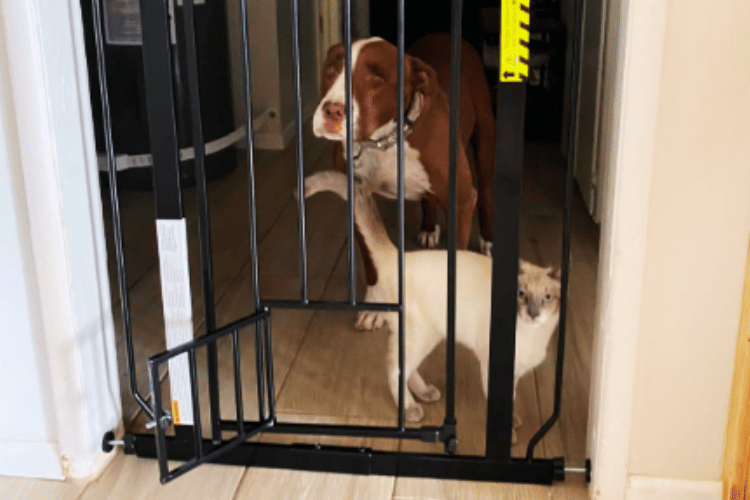
Moreover, the placement of pet gates can also enhance your home's overall look. Instead of hiding them away, position them strategically as a part of your interior layout. For instance, a beautifully crafted wooden gate can double as a feature piece in a hallway or between open-plan living spaces. This not only solves the practical issue of restricting your cat's movement but also adds a visual element to your home. Remember, the key is to choose a gate that complements your doors and furniture, creating a cohesive look throughout your living spaces.
Optimizing Pet Gate Installation for Maximum Efficiency
When installing a pet gate, it's crucial to ensure that every component is securely in place to prevent any clever escapes by your feline friend. Start by choosing a location that strategically maximizes the gate's effectiveness. For instance, installing the gate at the entrance of a narrow hallway rather than a wide doorway can limit your cat's ability to jump over or bypass the gate. Ensure that all hooks are tightly fastened, and double-check that the locking mechanism is functional and robust. This attention to detail at the moment of installation can make all the difference in the gate's performance.
Moreover, consider the height and width of the gate during installation. Cats are agile creatures capable of squeezing through surprisingly small spaces or leaping great heights. To counteract this, install the gate high enough off the ground so that the cat cannot simply scoot underneath, and ensure it spans the entire width of the doorway without leaving any gaps. Utilizing a level tool can help maintain a straight line during installation, ensuring that the gate is perfectly vertical and leaves no room for your cat to maneuver around it.
Innovative Locking Mechanisms for Cat Gates
When considering the security of a pet gate, the locking mechanism plays a pivotal role, especially when crafty cats are involved. Traditional latches might not always do the trick, as some cats can learn to open them. Innovative locking systems, which include complex mechanisms that cats cannot manipulate, provide an added layer of security. These locks might involve magnetic locks or advanced sliding mechanisms that ensure the gate remains closed unless intentionally opened by a human.
Moreover, for pet owners who are often busy and need to ensure their pets are safe while they're away, automated lock systems can be a game-changer. These systems can be programmed to lock or unlock at specific times, or can be controlled remotely via smartphones. This technology not only keeps the cat safe but also provides peace of mind to the pet owner, or "pet mom," who can watch over her furry family member from afar, ensuring they are safe and sound even when she's not at home.
Creative Ways to Integrate Hooks and Accessories on Cat Gates
Integrating hooks and other accessories into the design of cat gates can enhance their functionality and convenience. For instance, hooks can be used to hang toys or feather teasers, which can keep the cat entertained and distracted from the idea of escaping. This setup not only enriches the living environment of your cat but also utilizes the gate as more than just a barrier. By adding elements that engage a cat’s curiosity and playfulness, the gate becomes part of their daily activity zone.
Additionally, pet owners can use hooks to hang essential items like leashes, grooming tools, or even small bags containing treats. This approach helps in organizing pet-related items, making them easily accessible right where they are needed. Finally, this customization does not compromise the gate’s primary function but enhances it, making the pet gate a multi-functional addition to any pet-friendly home.
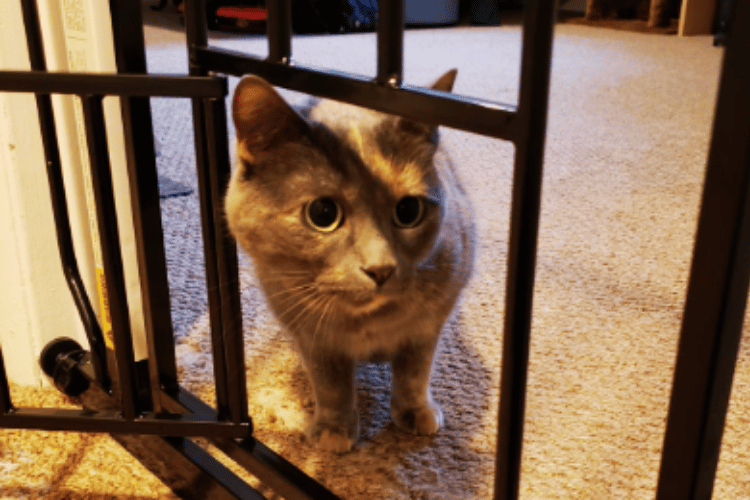
Visual and Auditory Enhancements to Pet Gates
Integrating visual and auditory elements into your pet gate can significantly enhance its effectiveness and ensure it blends seamlessly with your home decor. Consider attaching a decorative panel with a pleasing picture or pattern that complements your interior design. This not only disguises the gate but also makes it more of a feature piece than an eyesore. Additionally, the visual barrier might discourage the cat from attempting to jump over, as it obscures their view of what lies on the other side.
On the auditory front, adding a small bell or a sensor that emits a gentle sound when the gate swings could alert you whenever your cat is near the gate. This is particularly useful if you're trying to monitor your cat's movements or if you're training them to stay away from certain areas. The sound acts as an immediate auditory cue that can catch your attention at the crucial moment, allowing you to intervene if necessary. This setup not only keeps your cat safe but also gives you peace of mind, knowing you'll hear whenever your pet is on the move.
Smart Pet Gates: Technology Meets Convenience
As technology advances, so do the options for pet containment. Smart pet gates are revolutionizing how pet owners manage their homes and the movement of their pets. These gates often come equipped with features like automatic locking systems, which ensure the gate closes immediately after you walk through. This is particularly useful for those moments when your hands are full, or you're in a hurry. Some models even offer remote control operations via apps, allowing you to open or close the gate from anywhere in your home.
Additionally, smart pet gates can integrate with other home automation systems. Imagine installing a gate that automatically opens when your car pulls into the driveway or one that closes when it's time for your cat to sleep. These gates can also send alerts to your phone if left open, providing peace of mind when you're away from home or busy in another room. By incorporating these intelligent features, pet gates not only improve the safety and security of your pets but also enhance the convenience and efficiency of your daily routines.
Sensory Considerations in Pet Gate Selection
Cats are highly sensitive to their environments, particularly to smells and sounds. When selecting a pet gate, consider how the material of the gate might affect your cat. Metal gates, for example, can produce a distinct sound when they clang shut, which might startle a sensitive cat. On the other hand, wooden gates offer a softer sound and can be more visually appealing, blending better with indoor decor, which might be less stressful for both the pet and the owner.
Additionally, the smell of the materials used can also influence a cat’s reaction to a new gate. Some plastics and metals emit odors that cats may find unpleasant or off-putting, especially when new. Opting for natural materials like wood, which tend to have a more neutral smell, can be a better choice for sensitive noses. Always ensure that the materials used are non-toxic and safe for all pets in the home. This attention to sensory details can make the introduction of a new pet gate into the home a smoother and more pleasant experience for your cat.
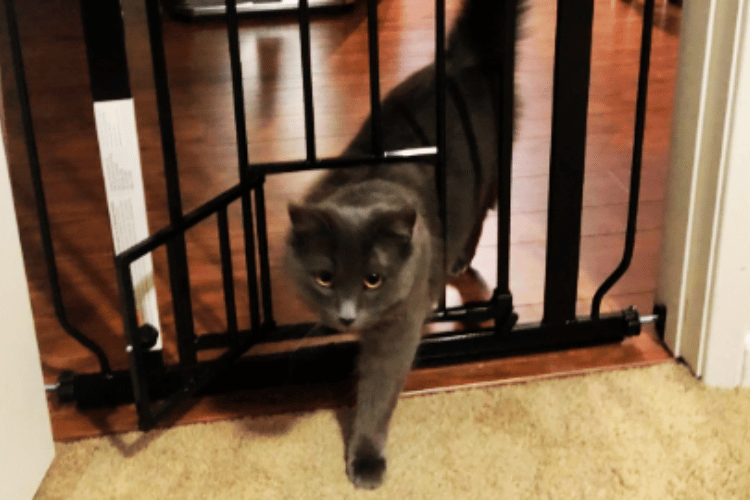
Customization and Adaptation of Pet Gates
Adapting pet gates to better suit the needs of your home and the specific behaviors of your cat can be achieved with a bit of creativity and a trip to the hardware store. For example, some cat owners have modified standard gates by adding extra lines of mesh or fabric to decrease the gap underneath, which prevents kittens from squeezing through. This DIY assembly enhances the gate's functionality without compromising the home's aesthetic.
Moreover, in other countries, it's common to see pet gates installed with hooks that attach to the floor or walls, adding an extra layer of sturdiness and reducing the chance of the gate being knocked down. This method is particularly useful in homes with multiple pets or young children. By customizing your pet gate, you not only cater to the specific needs of your pets but also ensure a higher level of safety and peace of mind for everyone in the household.
Alternative Solutions for Cat Containment
If a pet gate does not suffice, there are alternative solutions. Creating a dedicated cat room with all the necessary amenities like food, water, and the litter box can be an effective way to manage your cat’s space. This ensures they have everything they need in a confined, safe environment.
Safety Considerations
Safety is paramount when using pet gates to contain cats. Ensure that the gate does not pose a risk of injury if the cat attempts to climb or jump over it. Regular checks for wear and tear and ensuring the gate is always securely fastened will help prevent accidents.
Feedback from Cat Owners
Many cat owners share their experiences and feedback online, which can be invaluable when choosing the right pet gate. Learning from the experiences of others can help you anticipate potential issues and make a more informed decision.
DIY Modifications
Some cat owners opt to modify standard gates to better suit their needs. Adding height with extensions or using zip ties to secure loose bars are popular DIY fixes. However, ensure that any modifications do not compromise the gate’s structure or safety.
Conclusion
While a pet gate can be a useful tool in managing your cat’s movement around the house, its success largely depends on the type of gate, installation quality, and your cat’s behavior. Considering all these factors will help you determine the best solution for your home.
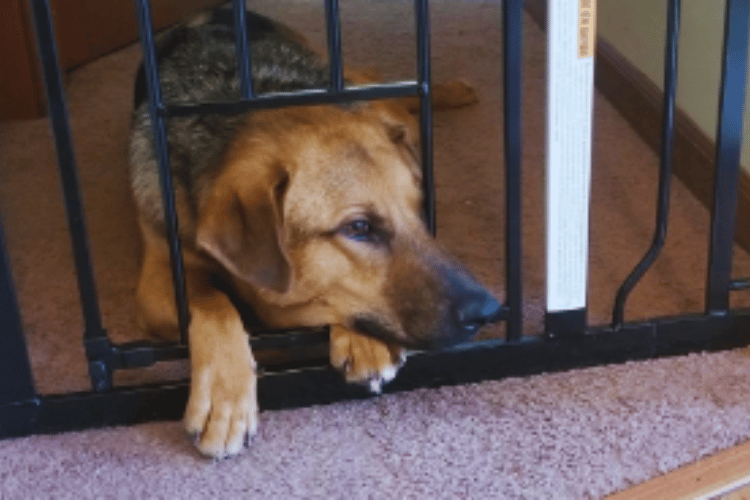
FAQ
Can cats climb over any pet gate?
Most cats can climb over standard pet gates unless the gate is particularly tall or designed with features that limit climbing.
Are extra tall cat gates guaranteed to stop a cat?
While extra tall cat gates provide a better barrier, they are not guaranteed to stop all cats, especially those that are determined and agile.
What is the best material for a pet gate to stop a cat?
Metal or heavy-duty plastic gates are generally the best options as they offer durability and resist damage from scratching and biting.
This comprehensive guide should help you understand the dynamics of using a pet gate to contain a cat, ensuring both the safety of your pet and the integrity of restricted areas in your home.
Thank you for visiting LegitLists we hope this helps you make a legitimate choice!






